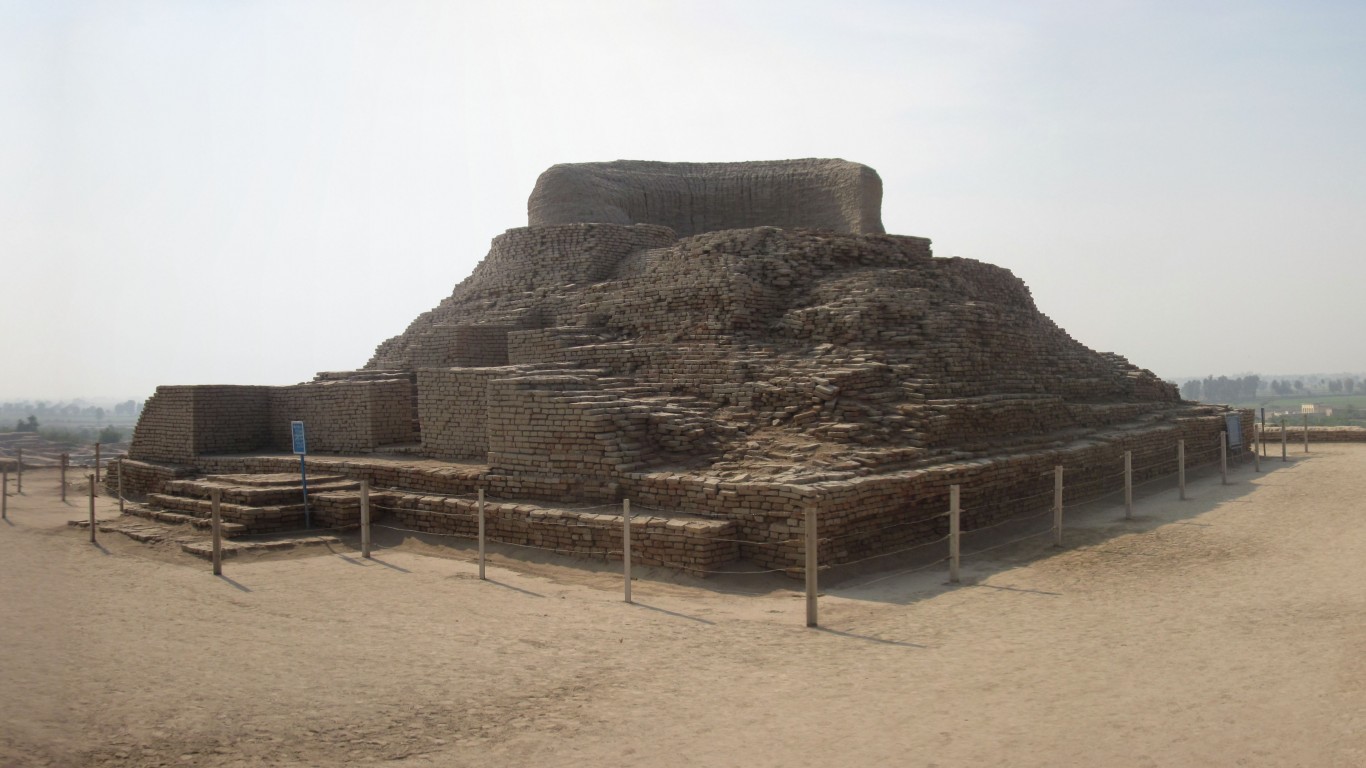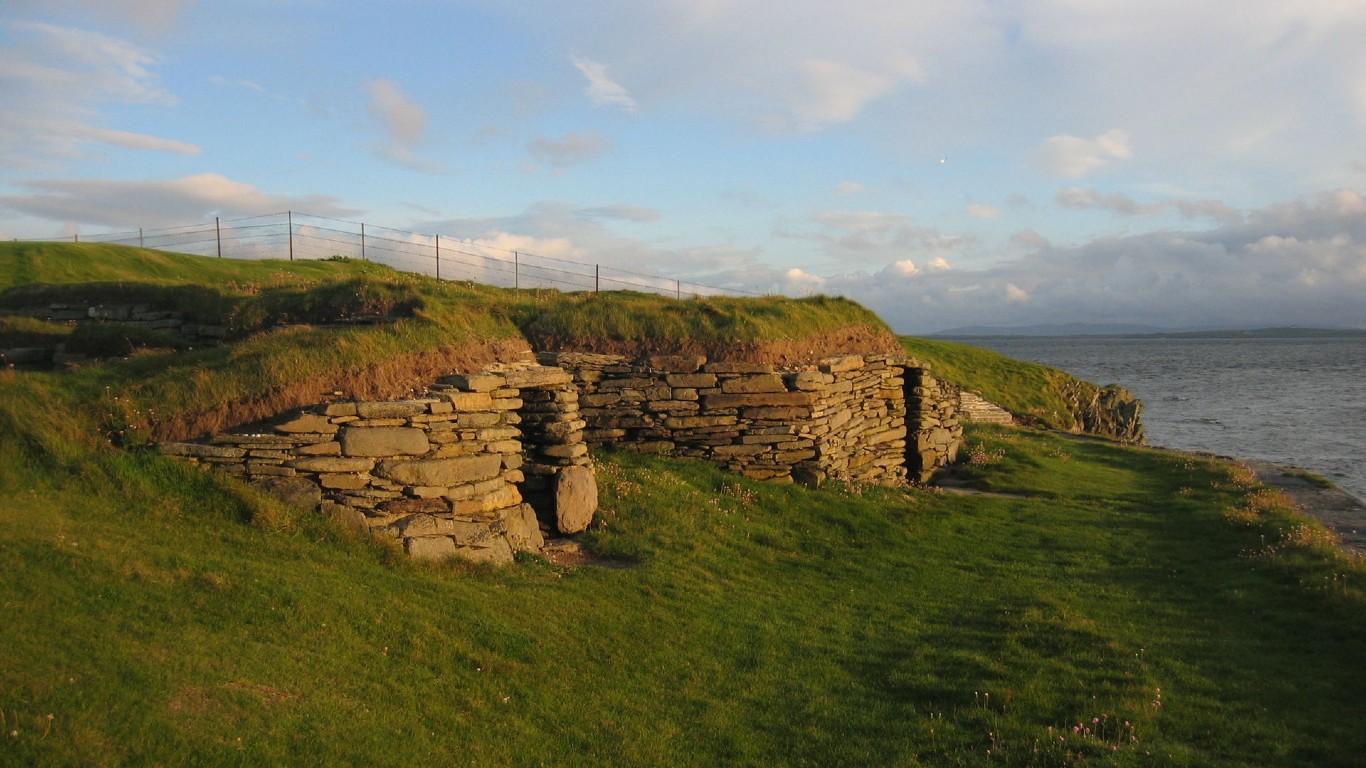
In the summer of 1976, a ground fire burned through a vegetated area on the island of Guernsey, revealing a granite slab protruding from a high mound of earth. The ensuing excavation revealed an undisturbed 6,500-year-old burial site now named Les Fouaillages — one of the oldest monuments ever discovered in western Europe.
Ancient structures are discovered every year, adding to our understanding of human cultural evolution. Many of the oldest structures in existence had religious significance. These include tombs where bodies were interred with items intended to assist their owners in the afterlife, temples dedicated to the deities that a particular culture revered, and altars where animals and possibly even humans were sacrificed. (Here are ancient civilizations that have sacrificed humans.)
24/7 Tempo has compiled the 30 oldest structures in the world by consulting a number of archaeological, engineering, historical, and general interest websites, including World Archaeology, Realm of History, and Smithsonian Magazine.
Some sites date back to the Paleolithic era, which began some 2.5 million years ago and lasted until around 10,000 B.C. The era is marked by hunter-gatherer societies who used chipped stone and bone tools. Most sites, however, were built during the following Neolithic era, during which nomadic societies began to settle in permanent or semi-permanent locations and also began to refine their stone tools.
During this time, animal domestication and agriculture sprouted up independently in numerous societies. Some of the oldest structures in the world include tombs and burial mounds, religious temples, protective walls, and even entire cities. Here are the oldest continuously inhabited cities in the world.
Click here to see the 30 oldest structures in the world

Ngunnhu Fish Traps of Brewarrina
> Year built: circa 38000 B.C.
> Location: Brewarrina, New South Wales, Australia
> Purpose: Fish traps
Potentially the oldest human construction in existence, these ancient stone walls built by Australian Aboriginal people in the Barwon River were damaged considerably when Europeans began to colonize the area. An Aboriginal legend attributes the creation of the fish traps to the sky god Baiame.
[in-text-ad]
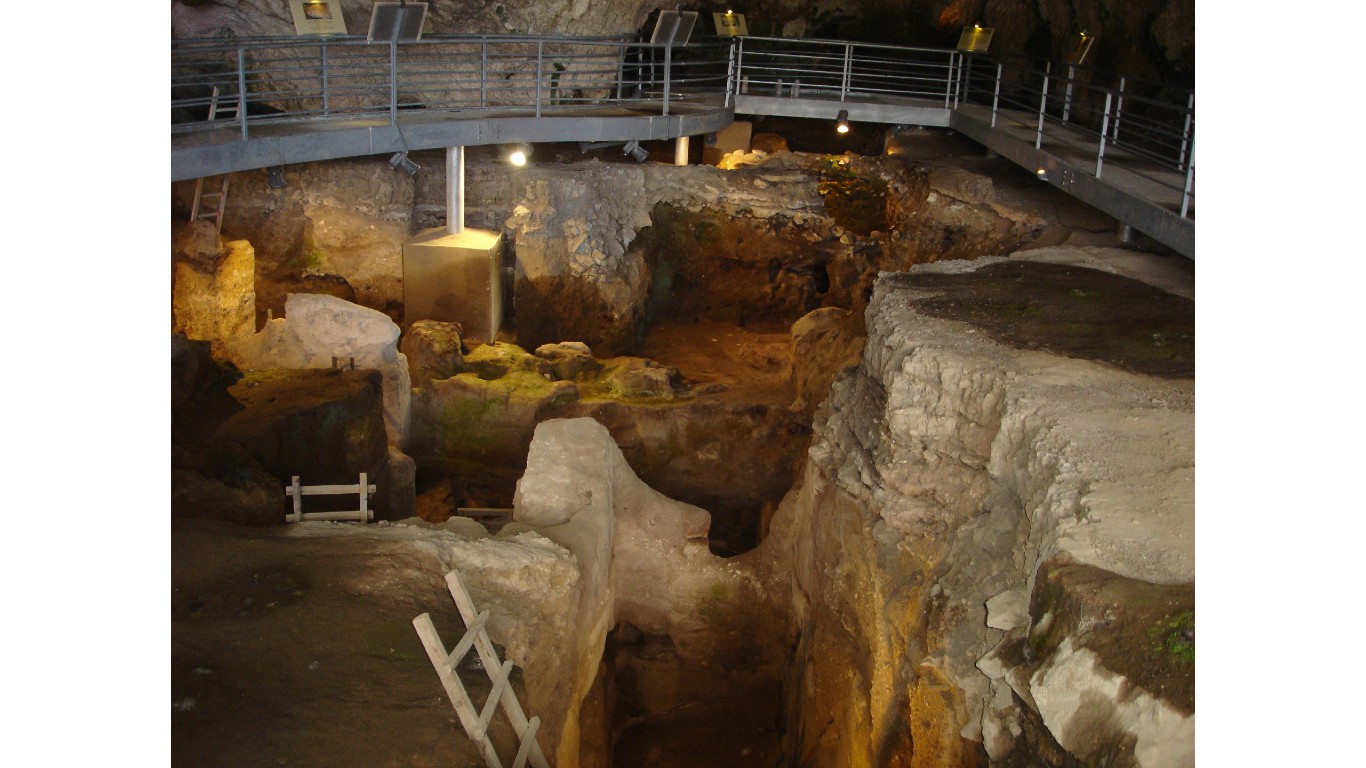
Theopetra Cave Wall
> Year built: circa 21000 B.C.
> Location: Theopetra Cave, Thessaly, Greece
> Purpose: Barrier against the wind
This wall protects the entrance to a cave used by Paleolithic people during the last ice age. Built of stone in dry masonry fashion, the wall likely helped keep the cold out of the cave, which consists of a 5,382 square foot cavern. Evidence of earlier Neanderthal activity in the cave dates back 135,000 years.
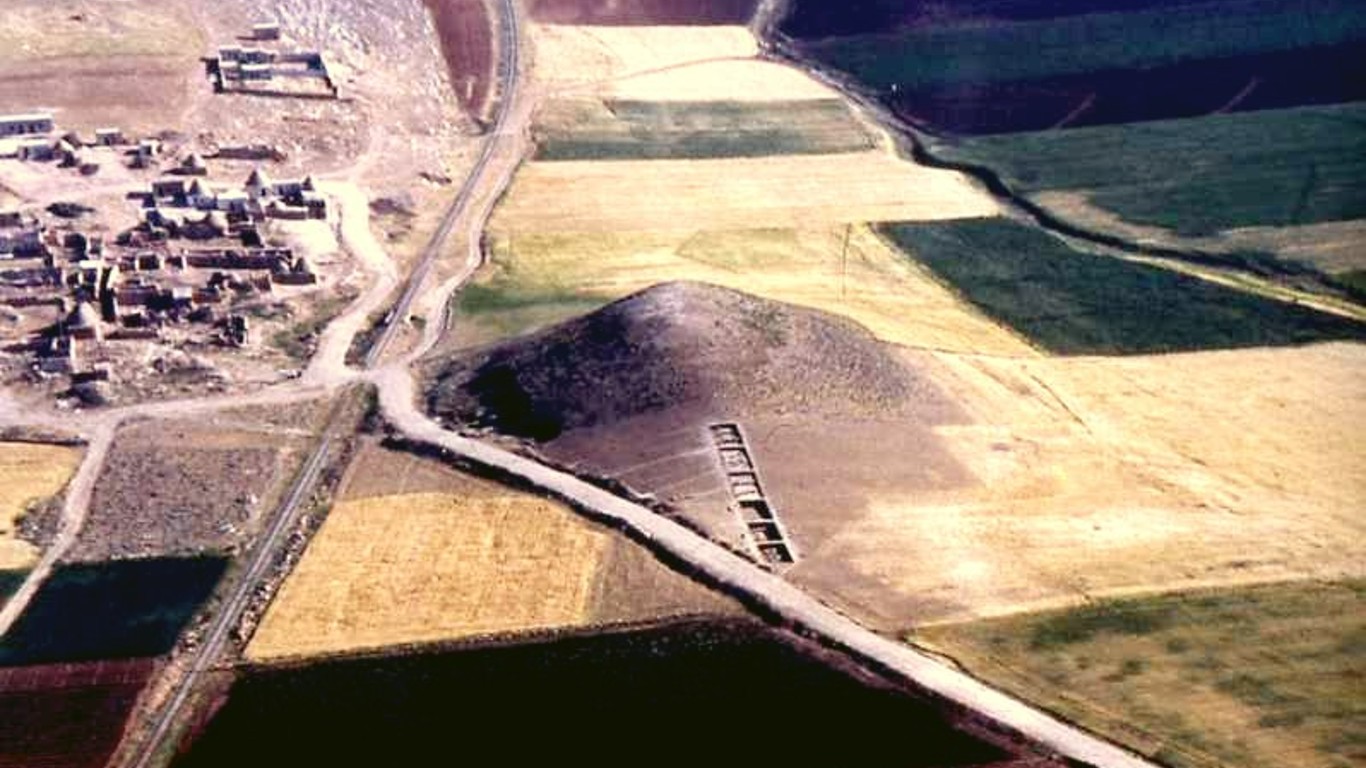
Tell Qaramel
> Year built: circa 11000-9670 B.C.
> Location: Aleppo Governorate, Syria
> Purpose: Settlement
This Neolithic archaeological site contains the earliest known permanent stone-built settlement in the world. The site includes the remains of five stone towers, the oldest of which contains a raised hearth surrounded by benches. Evidence from the site suggests that the original settlement predates grain agriculture and animal domestication — the usual factors that spawned settlements — and that the settlement may have started instead because of religious ceremonies.

Ruins at Göbekli Tepe
> Year built: circa 9500-8500 B.C.
> Location: Southeastern Anatolia, Turkey
> Purpose: Unknown
Predating the development of metal tools, pottery, and agriculture, this ancient Neolithic site of massive stone megaliths that are arranged in circles may be the oldest temple in the world. The pillars are carved with human likenesses and weigh up to 10 tons each.
[in-text-ad-2]

Wall of Jericho
> Year built: circa 8000 B.C.
> Location: Tell es-Sultan/Tel Jericho, West Bank, Palestinian Territories/Israel
> Purpose: Defensive barrier or flood protection
Likely built to protect the Neolithic settlement from floodwaters, the wall at Jericho was originally nearly 12 feet high and over 5 feet wide. Jericho is considered the oldest walled city in the world and is one of the oldest continually occupied cities as well. The original dwellings within the wall were circular homes made of clay and straw bricks.
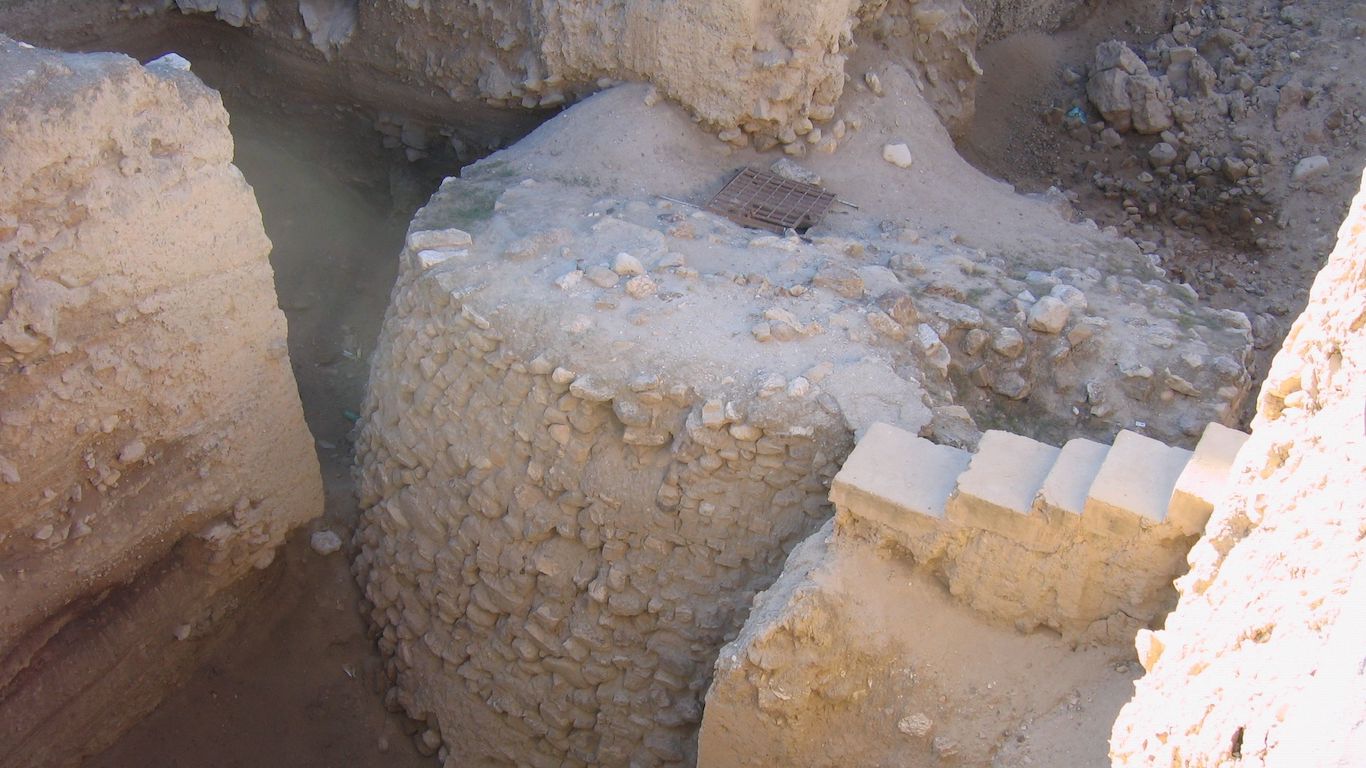
Tower of Jericho
> Year built: circa 8000 B.C.
> Location: Tell es-Sultan/Tel Jericho, West Bank, Palestinian Territories/Israel
> Purpose: Unknown
Within the wall of Jericho is a massive stone tower with 22 steps ascending the interior. The conical tower is 28 feet high and may have had a communal or ceremonial function in the early settlement. It is estimated that the stone structure took 11,000 days to build.
[in-text-ad]

Çatalhöyük
> Year built: circa 7500 B.C.
> Location: Konya province, Turkey
> Purpose: Settlement
This large Neolithic settlement was occupied between 7500 and 6400 B.C., likely peaking around 7000 B.C. with 10,000 inhabitants. The mud brick dwellings and other buildings are clustered together with no alleys or walkways between them. Instead, interior access was gained through holes in the roofs, and rooftops were likely used as streets and as a stage for daily activities.
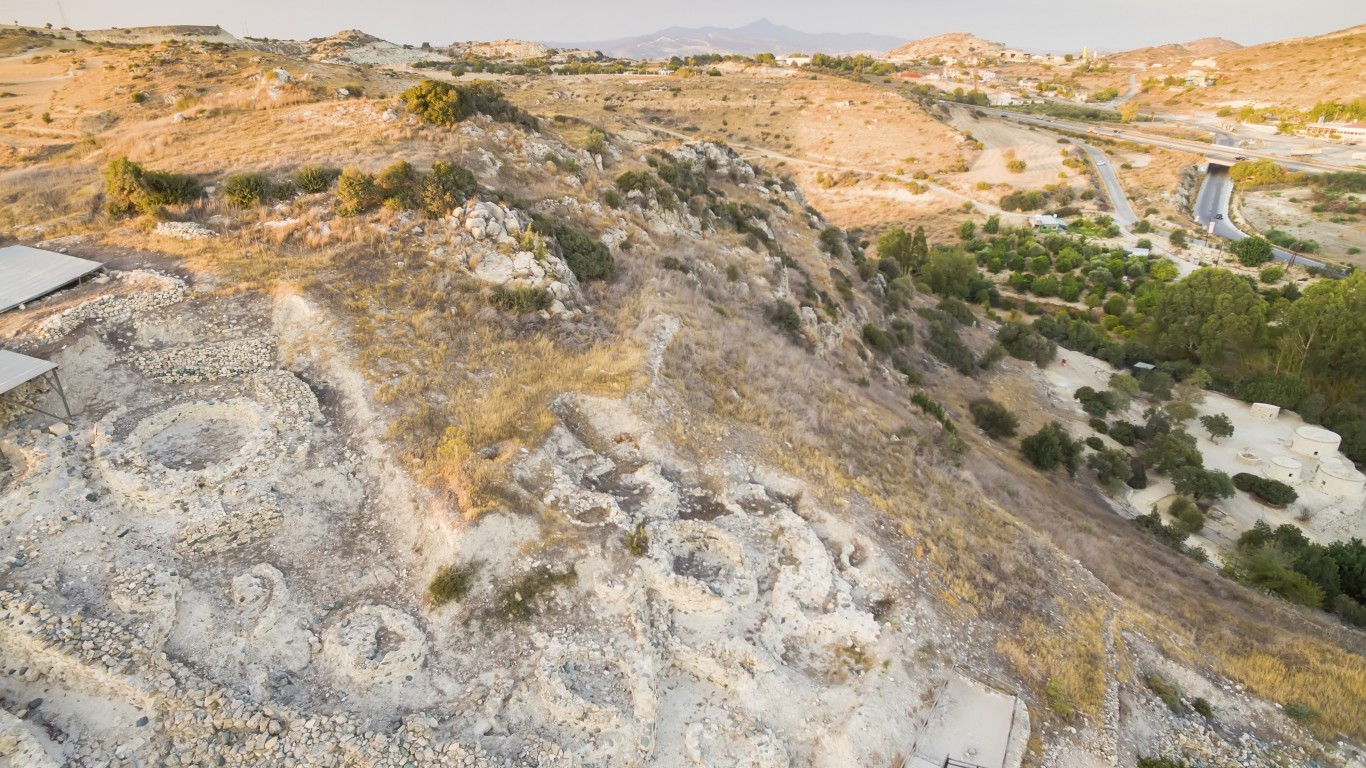
Khirokitia
> Year built: circa 7000 B.C.
> Location: Larnaca, Cyprus
> Purpose: Settlement
One of the best preserved pre-pottery Neolithic settlements in the Mediterranean, Khirokitia was likely occupied from the seventh to fourth millennium B.C. The village was completely surrounded by a thick stone wall, and the foundations for the round living structures within the wall were also made of stone. Multiple huts arranged around a central courtyard are thought to have comprised a single home, with each hut used for different activities.
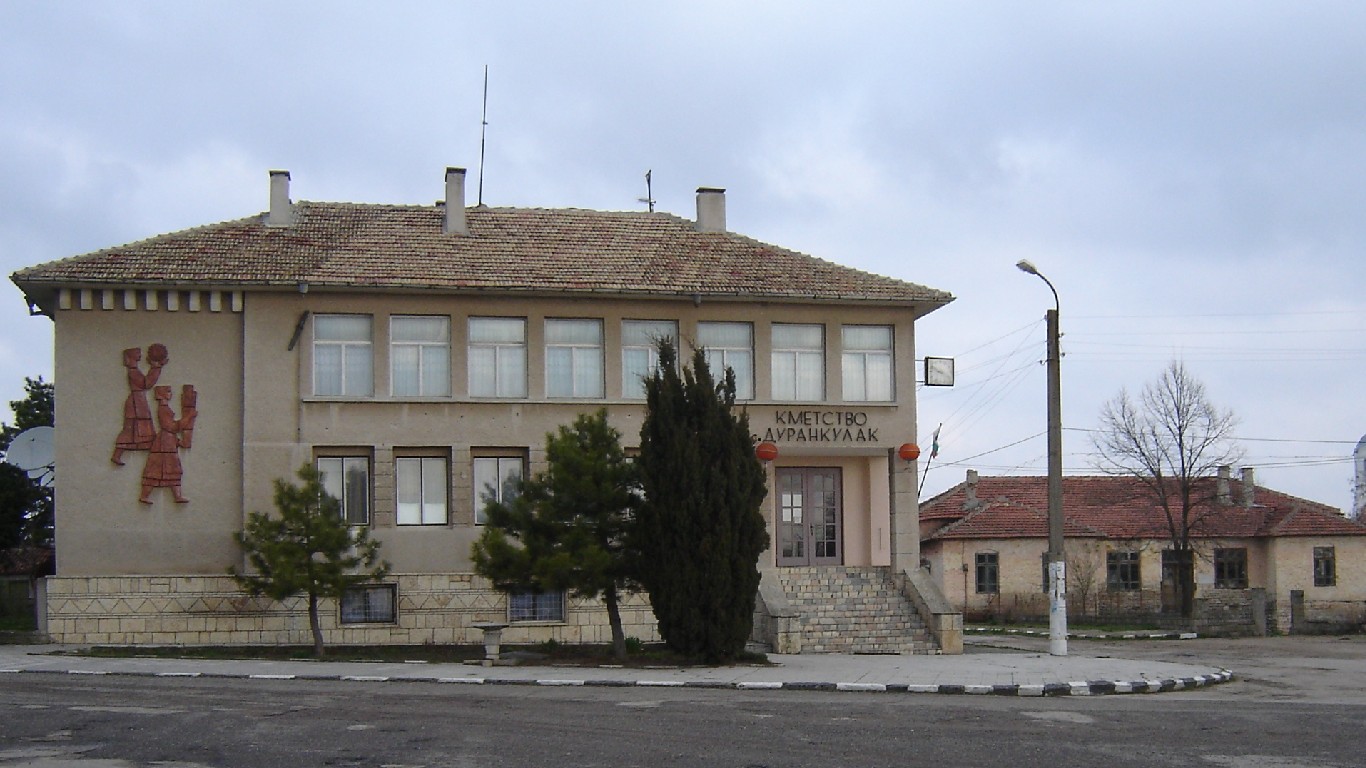
> Year built: circa 5500 B.C.
> Location: Dobrich Province, Bulgaria
> Purpose: Settlement
On an island in Durankulak lake, this large Neolithic settlement contains numerous stone buildings, including one of the largest prehistoric stone buildings in Europe, at over 2,000 square feet. Homes were large with several rooms in each building. The people who built these structures were not only excellent stone workers, but they were also one of the first cultures to smelt copper and gold into jewelry.
[in-text-ad-2]
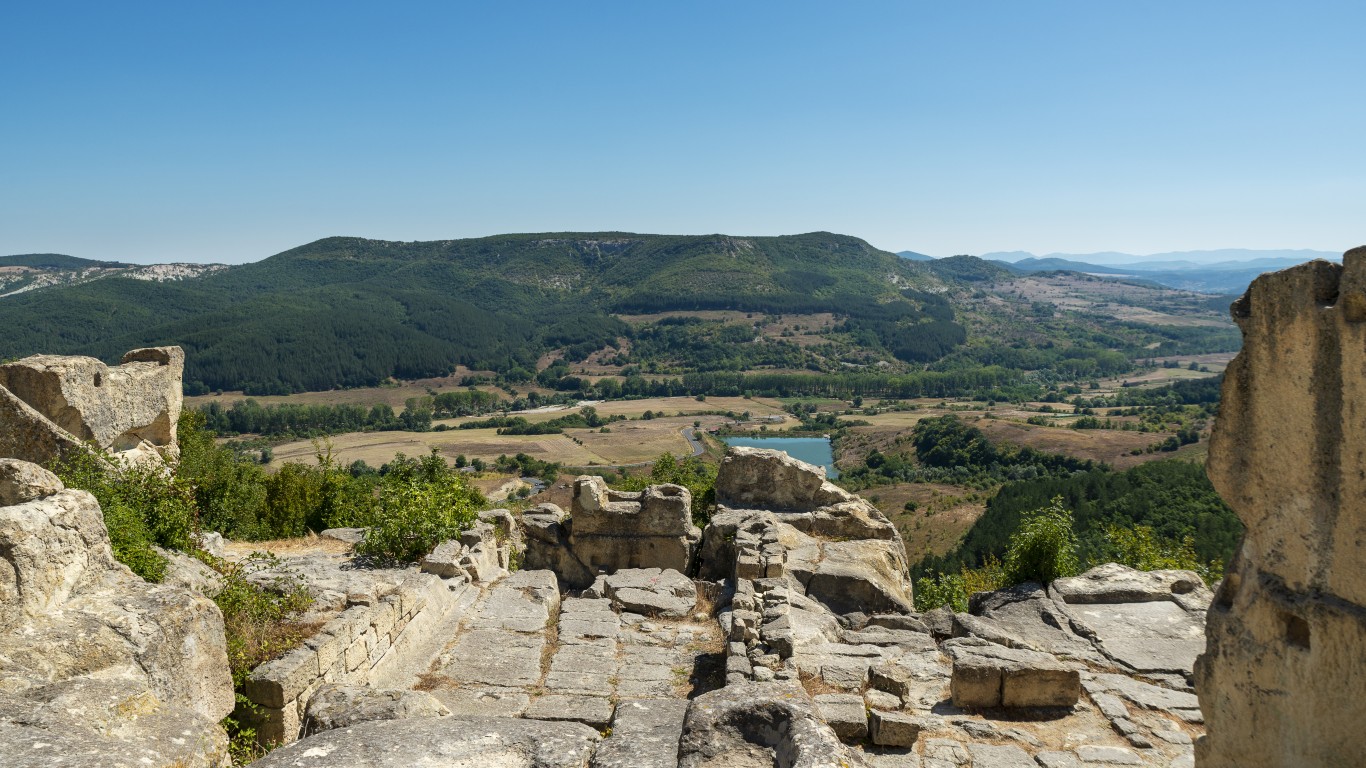
Perperikon
> Year built: circa 5000 B.C.
> Location: Kardzhali Province, Bulgaria
> Purpose: Settlement
Although the city of Perperikon saw many incarnations as it went from Thracian to Roman to Byzantine rule, the earliest human traces date back to the fifth millennium B.C. One of the oldest structures there is a round altar nearly 6 feet in diameter that was carved out of rock. The sanctuary was carved out of the mountain in the late Bronze Age, and many archaeologists believe it may have been used as a temple of Dionysus.
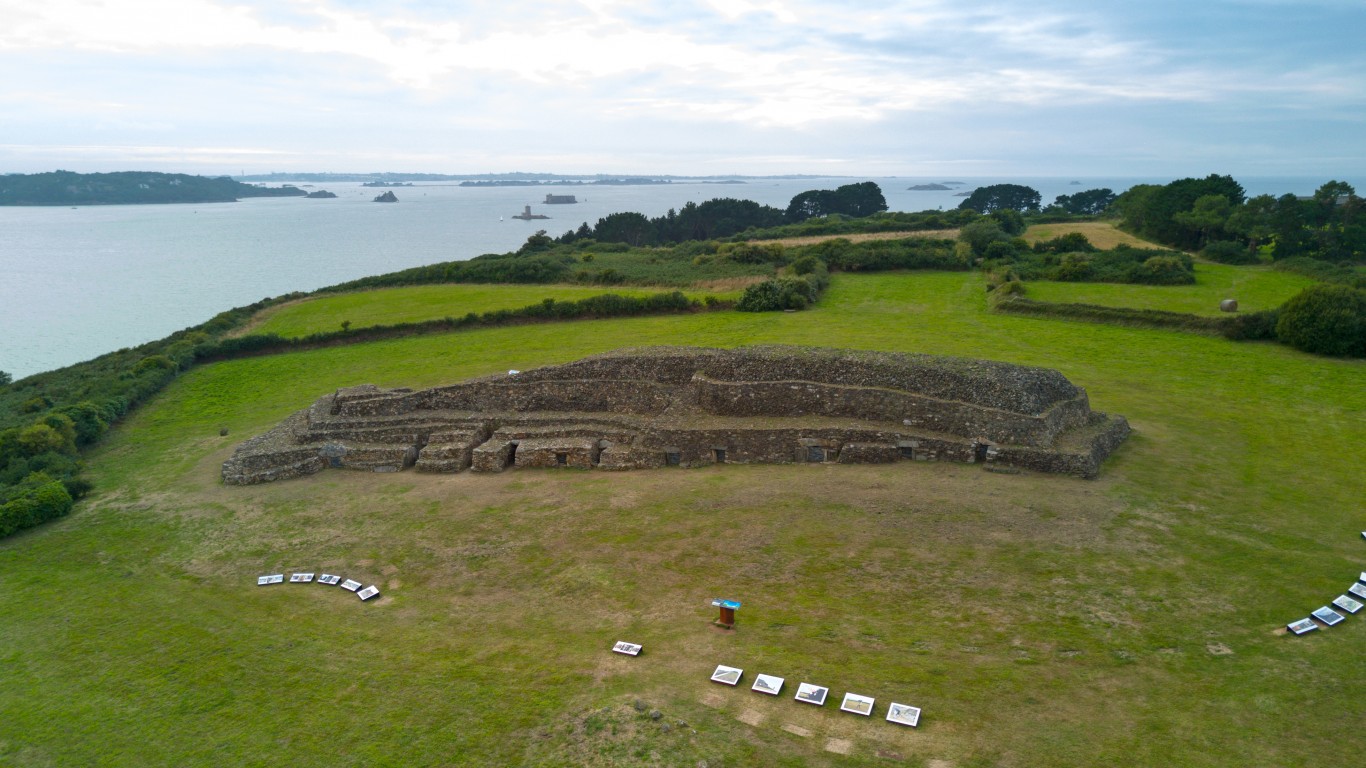
Cairn of Barnenez
> Year built: circa 4800 B.C.
> Location: Finistere, Brittany, France
> Purpose: Monument
The Cairn of Barnenez is a massive stone megalithic monument measuring 246 feet long, 82 feet wide, and over 27 feet high. Made of over 13,000 stones, the ancient structure contains 11 burial chambers and numerous carvings depicting snakes, bows, axes, and other symbology common in megalithic art found in Brittany.
[in-text-ad]

Locmariaquer megaliths
> Year built: circa 4700-3300 B.C.
> Location: Locmariaquer, Brittany, France
> Purpose: Monuments
This Neolithic complex contains multiple structures, including the broken remains of a 67 foot, 330 ton carved stone monument that most likely fell during an earthquake and now lies on the ground in four pieces. It is considered the largest single stone ever transported and erected by Neolithic peoples. Also in the complex is a large monolithic tomb (known as a dolmen), containing carvings of an ax and a plow, and a 460-foot-long passage tomb.
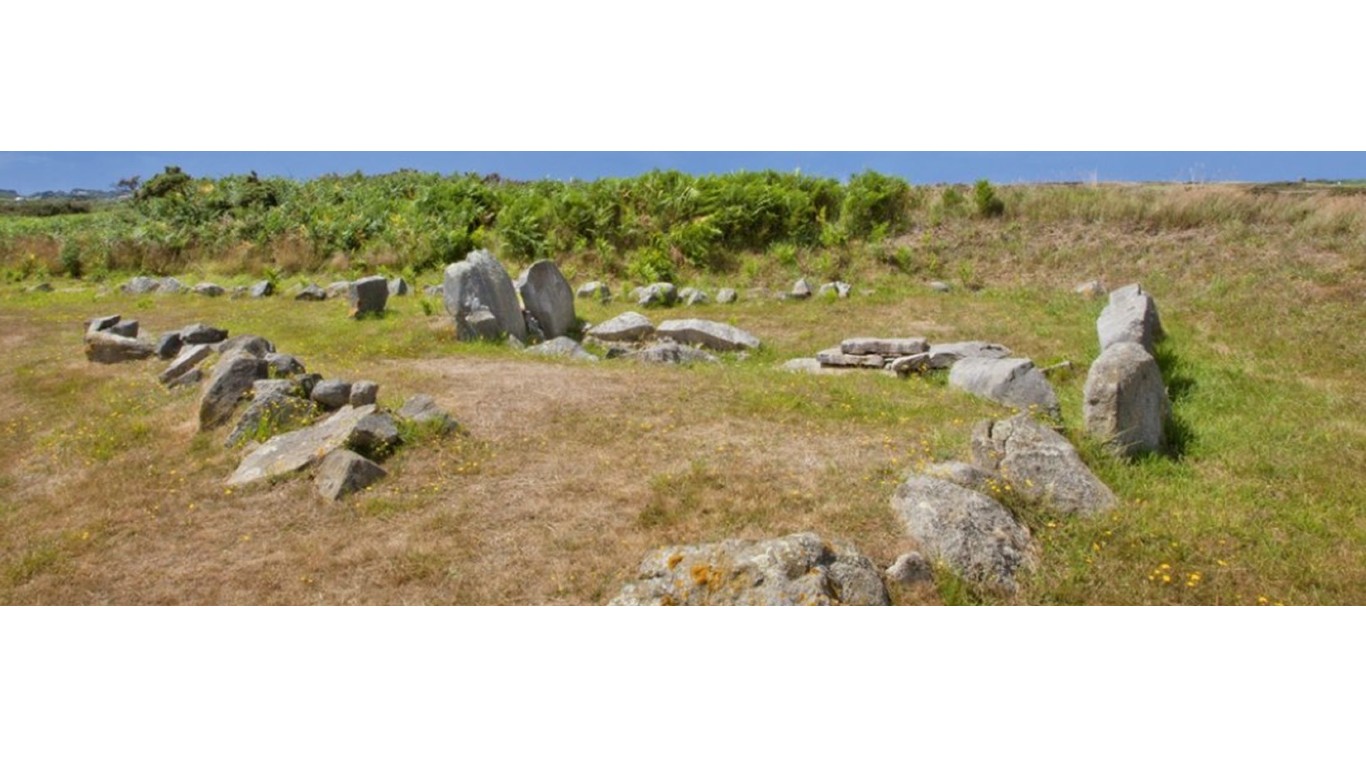
Les Fouaillages
> Year built: circa 4500 B.C.
> Location: Guernsey, Channel Islands, English Channel
> Purpose: Burial ground
An ancient burial site discovered in 1976, this excavated mound contains a stone structure that is most likely the remnants of a tomb, where shards of pottery suggest funerary offerings were made. Another structure there was likely used as a shrine.
Sechin Bajo
> Year built: circa 3600 B.C.
> Location: Ancash, Peru
> Purpose: Settlement
Situated on the arid Peruvian coast, the Sechin Bajo site is possibly a remnant of the oldest civilization in the Americas. The ruins cover 91 acres with the oldest structures, including a ceremonial center, sunken circular plazas, and an adobe clay frieze depicting a man holding two objects that might be a ceremonial knife or staff and a human head.
[in-text-ad-2]
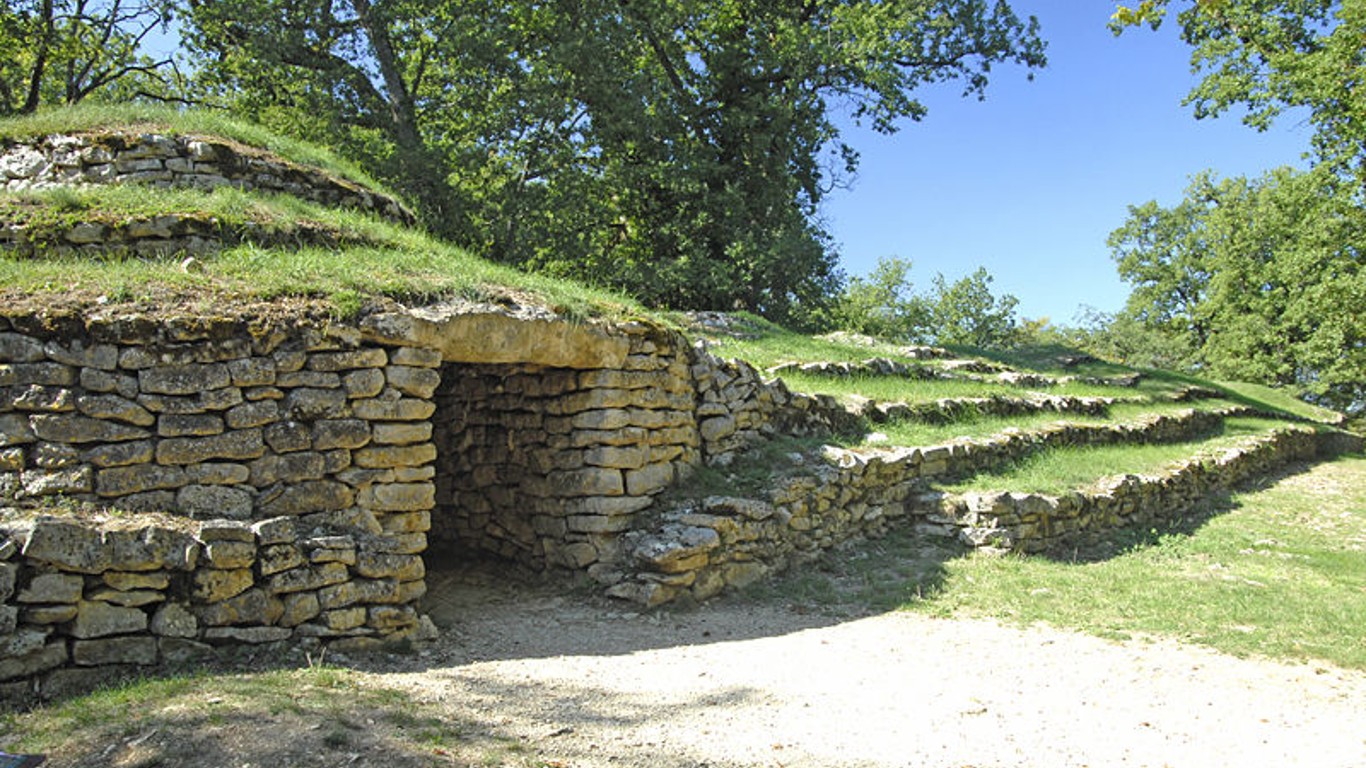
Tumulus of Bougon
> Year built: circa 4800 B.C.
> Location: Bougon, Deux-Sevres, France
> Purpose: Burial ground
This Neolithic burial ground includes five barrows or burial mounds made of layered dry stone and earth. Each mound contains passageways, some with internal structure including pillars and capstones over the burial chambers as well as slab floors. Human remains found in the chambers include skulls and skeletons.

Saint-Michel Tumulus
> Year built: circe 4500 B.C.
> Location: Carnac, Brittany, France
> Purpose: Burial ground
Among numerous burial mounds in Brittany, Saint-Michel Tumulus holds the record of being the largest in continental Europe, at 410 feet long, 160 feet wide, and 33 feet high. A central vault containing pearls, axes, and other funerary offerings was discovered in 1862, and later excavation revealed a second vault containing over a dozen small stone chests.
[in-text-ad]
Hypogeum of Hal Saflieni
> Year built: circa 4000 B.C.
> Location: Paola, Malta
> Purpose: Shrine, sanctuary, mass tomb
This underground temple complex holds a necropolis, where nearly 7,000 distinct human remains have been found, including a few skulls with elongated craniums. The complex was likely carved out of an existing cave and contains red ochre paintings and carefully planned light openings that illuminate the various chambers.
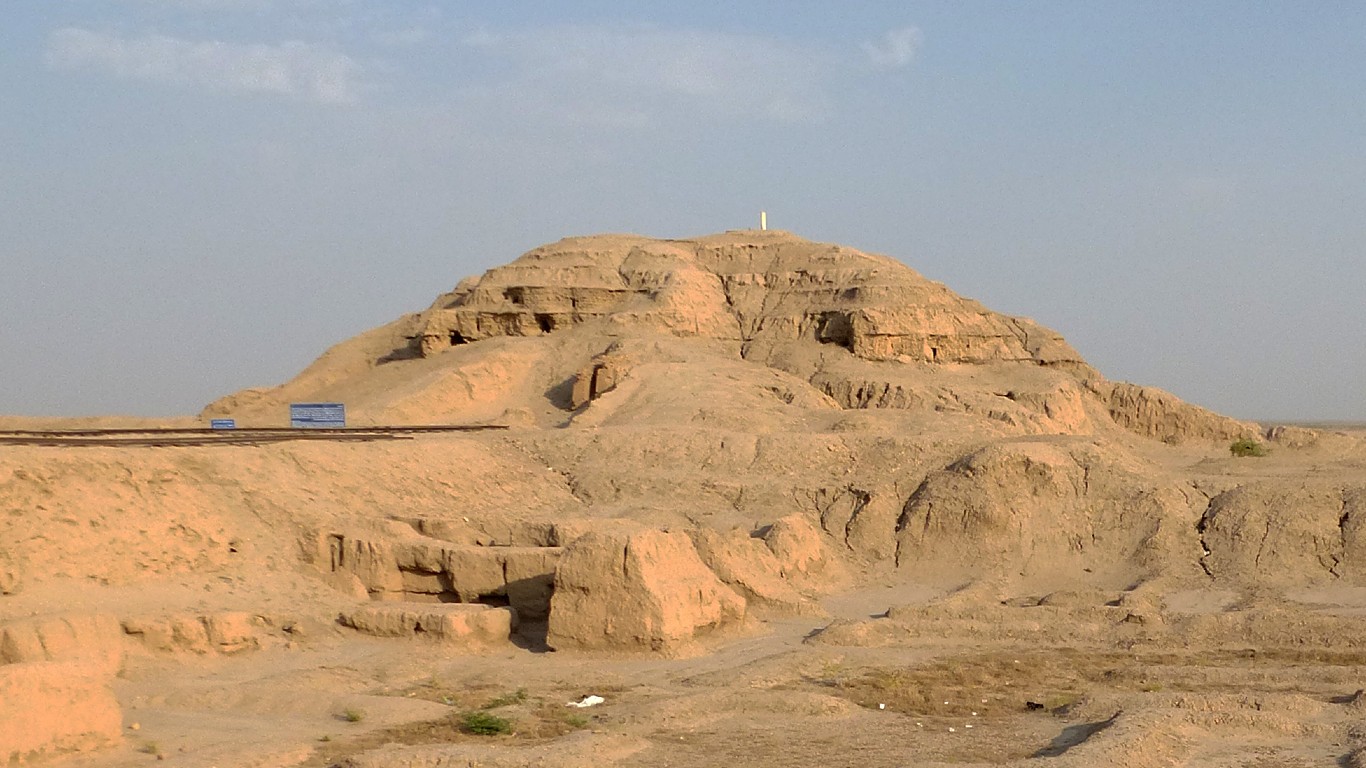
Anu Ziggurat
> Year built: circa 4000-3800 B.C.
> Location: Uruk, Al-Warka, Muthanna Governorate, Iraq
> Purpose: Terraced tower and temple
Dedicated to the Sumerian sky god Anu, this ziggurat towering over the desert plain of Uruk had a large limestone staircase leading to a temple on top known today as the White Temple. The temple was coated with gypsum and was used for religious rituals. The ziggurat was first built in 4000 B.C. and underwent 14 subsequent phases of additional construction.
Monte d’Accoddi
> Year built: circa 4000-3650 B.C.
> Location: Sassari, Sardinia, Italy
> Purpose: Temple or altar
Presumed to be an altar or temple, this raised stone platform on the island of Sardinia was initially built around 4000 B.C., then destroyed around 3000 B.C., and rebuilt with limestone into a step pyramid resembling a ziggurat. Remains of sheep, pig, and cow sacrifices have been excavated from the site, making it one of the earliest known religious monuments in the Western Mediterranean.
[in-text-ad-2]

Knap of Howar
> Year built: circa 3700 B.C.
> Location: Papa Westray, Orkney, Scotland
> Purpose: Farmhouse
A stone homestead site overlooking the sea, the Knap of Howar may be the oldest preserved stone house in northern Europe. The Neolithic farm site contains two dwellings conjoined by a passageway, with remnants of stone shelves, beds, and fireplaces inside, as well as evidence of domesticated livestock, barley cultivation, and line fishing.
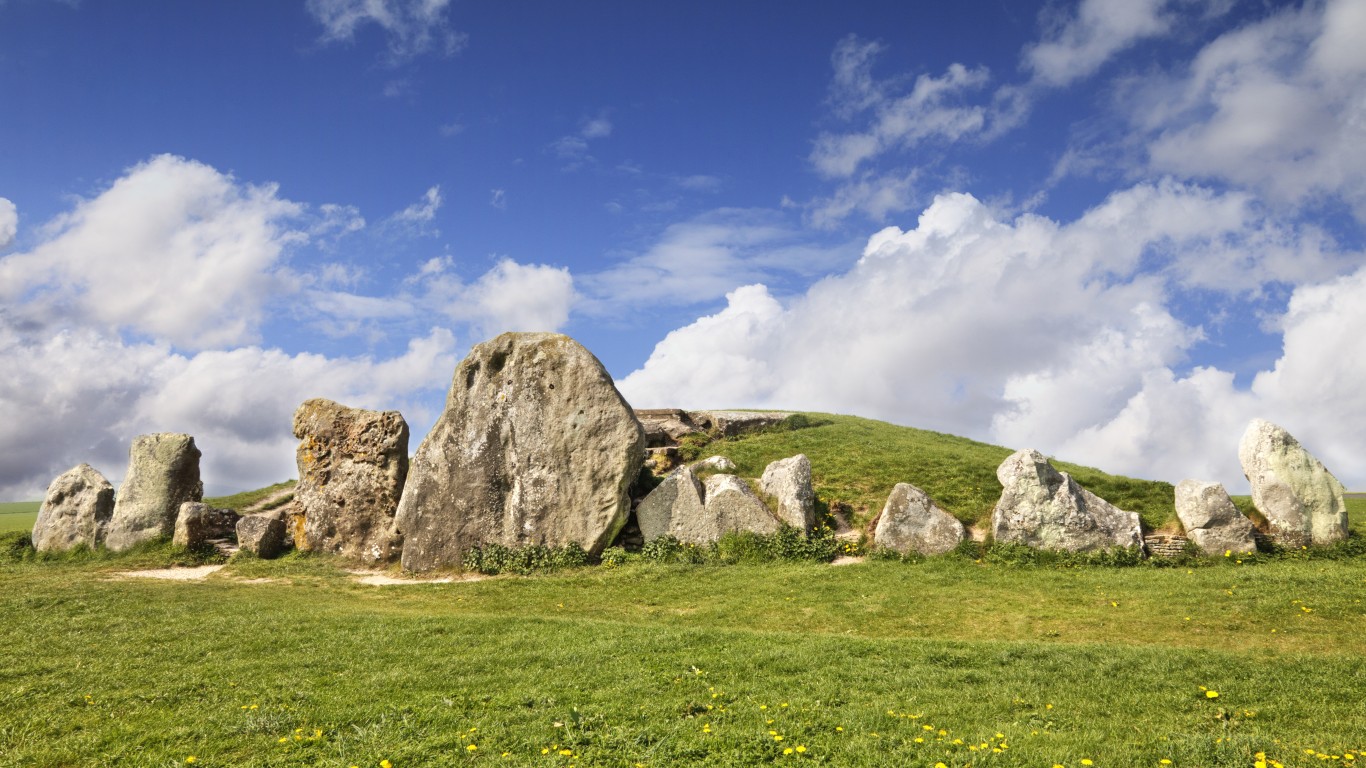
West Kennet Long Barrow
> Year built: circa 3650 B.C.
> Location: Wiltshire, England
> Purpose: Tomb
This long barrow is a Neolithic burial mound built of earth, stone monoliths, and limestone by an early nomadic grazing culture. It measures over 300 feet long by 65 feet wide and contains an elaborate 40 foot inner burial chamber. The diverse remains of human and animal bones found in the barrow span several centuries.
[in-text-ad]
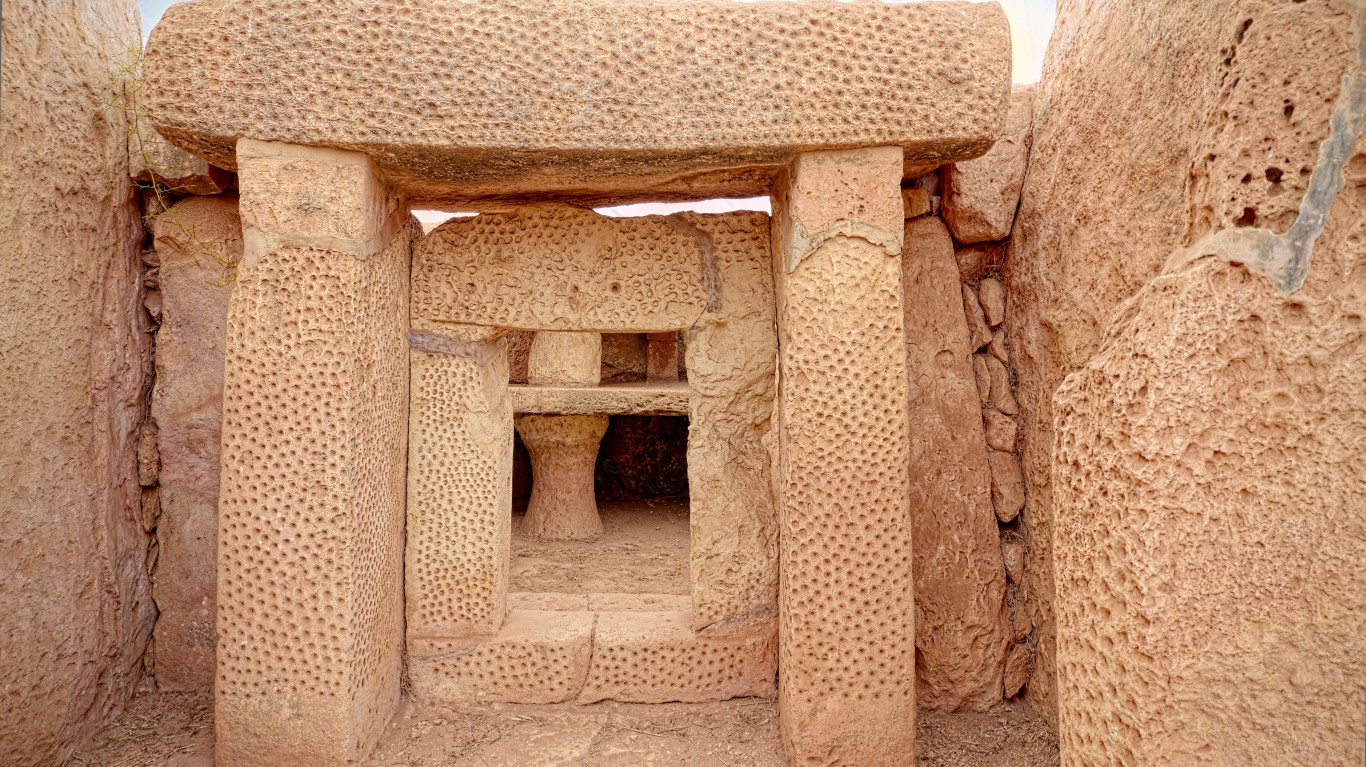
Megalithic Temples of Malta
> Year built: circa 3600-2500 B.C.
> Location: Various locations, Malta
> Purpose: Temples
Multiple megalithic temples built between 3600 B.C. and 2500 B.C. on the island of Malta provide evidence of the cultural and architectural evolution of the Neolithic peoples who built them. They are among the oldest free-standing stone buildings in the world and share several key similarities, including ovular forecourts, stone post entryways, and D-shaped chambers.

Listoghil
> Year built: circa 3550 B.C.
> Location: County Sligo, Ireland
> Purpose: Tomb complex (passage tomb)
Within Carrowmore, a complex of 30 tombs and other megalithic monuments in northern Ireland, Listoghil is the huge central tomb, measuring 111 feet in diameter and made of dry laid stone. The central chamber contains a carved limestone slab as well as the remains of cremated and un-cremated human bones.

Watson Brake
> Year built: circa 3500 B.C.
> Location: Ouachita Parish, Louisiana, U.S.A.
> Purpose: Seasonal settlement (?)
The oldest network of earthen mounds in North America, these Middle Archaic structures were built and utilized over centuries by a hunter-gatherer culture. The site contains 11 mounds (ranging from 3 to 25 feet high) connected by ridges and forming a 900-foot oval. Deposits in the strata suggest that the area was used as a base for the nomadic culture from summer through fall.
[in-text-ad-2]
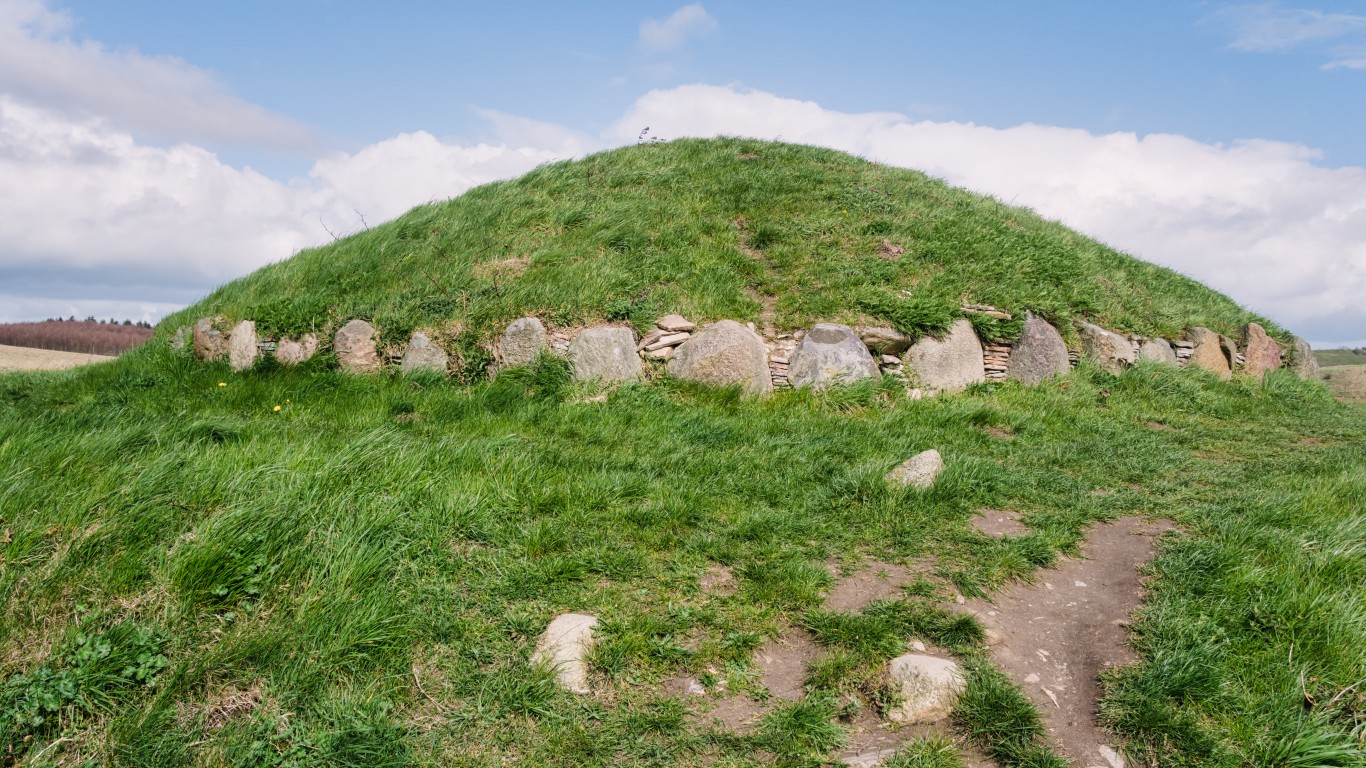
Hulbjerg Jættestue
> Year built: circa 3300-3200 B.C.
> Location: Langeland, Denmark
> Purpose: Tomb complex (passage tomb)
This passage tomb on the Danish island of Langeland was built by the Funnelbeaker culture and consists of a round stone barrow and a large central chamber with a rock slab roof and finely tiled stone walls and floors. Upon excavation, the mound contained the remains of 36 adults and 17 children, as well as amber beads, flint daggers, ceramics, and arrowheads.
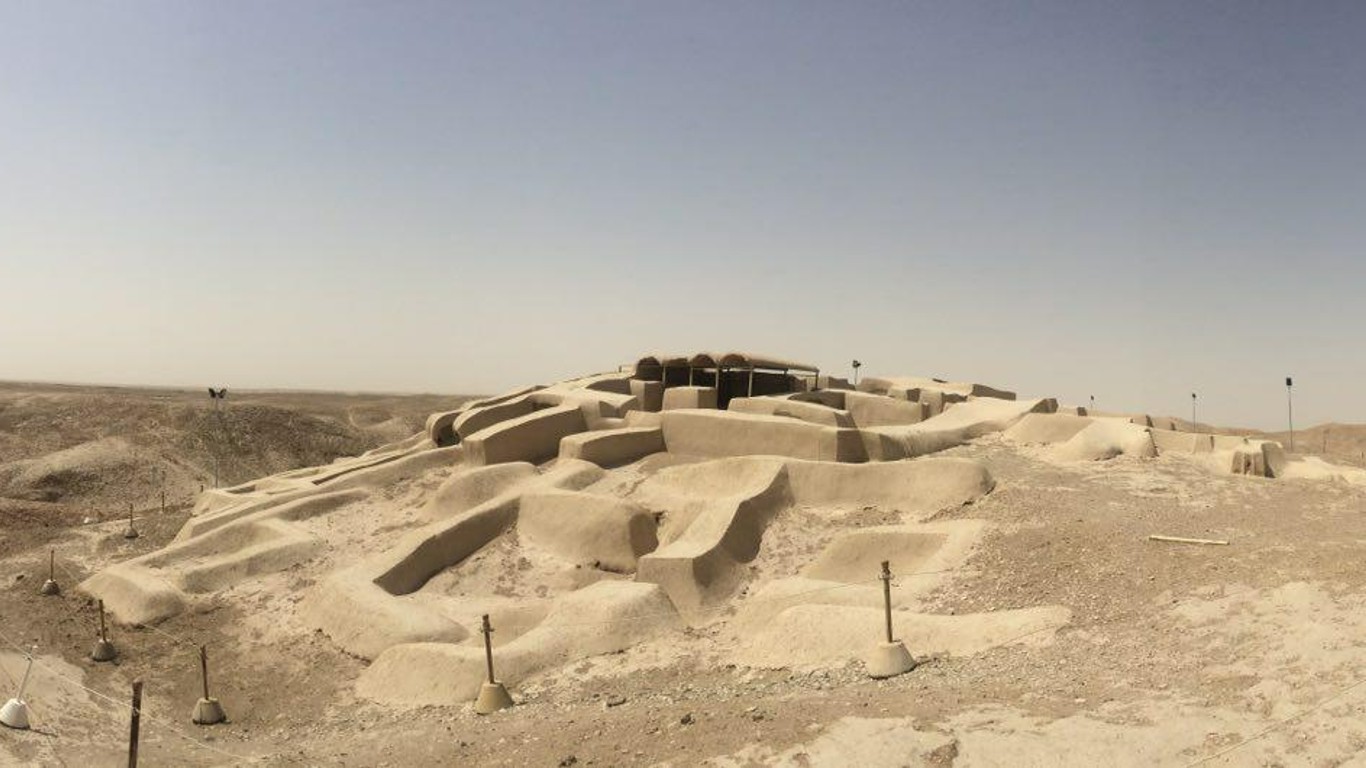
Shahr-e Sukhteh
> Year built: circa 3200 B.C.
> Location: Sistan and Baluchestan Province, Iran
> Purpose: Settlement
Shahr-e Sukhteh, which translates to “Burnt City,” was a Bronze Age trade route city that had striking cultural differences from the surrounding civilizations and was burnt down three times before it was finally abandoned. The remains of the city span over 370 acres and contain five distinct sectors, including a huge graveyard with anywhere from 25,000 to 40,000 graves.
[in-text-ad]

Newgrange
> Year built: circa 3200 B.C.
> Location: County Meath, Ireland
> Purpose: Tomb complex (passage tomb)
This huge passage tomb is 39 feet high, nearly 280 feet wide, and contains over 220,000 tons of stone and building material, including white quartz and engraved stones. Inside its central chambers, human remains and funerary offerings have been found. The entryway contains an opening that is aligned with the rising sun on winter solstice, allowing sunlight to flood the interior.
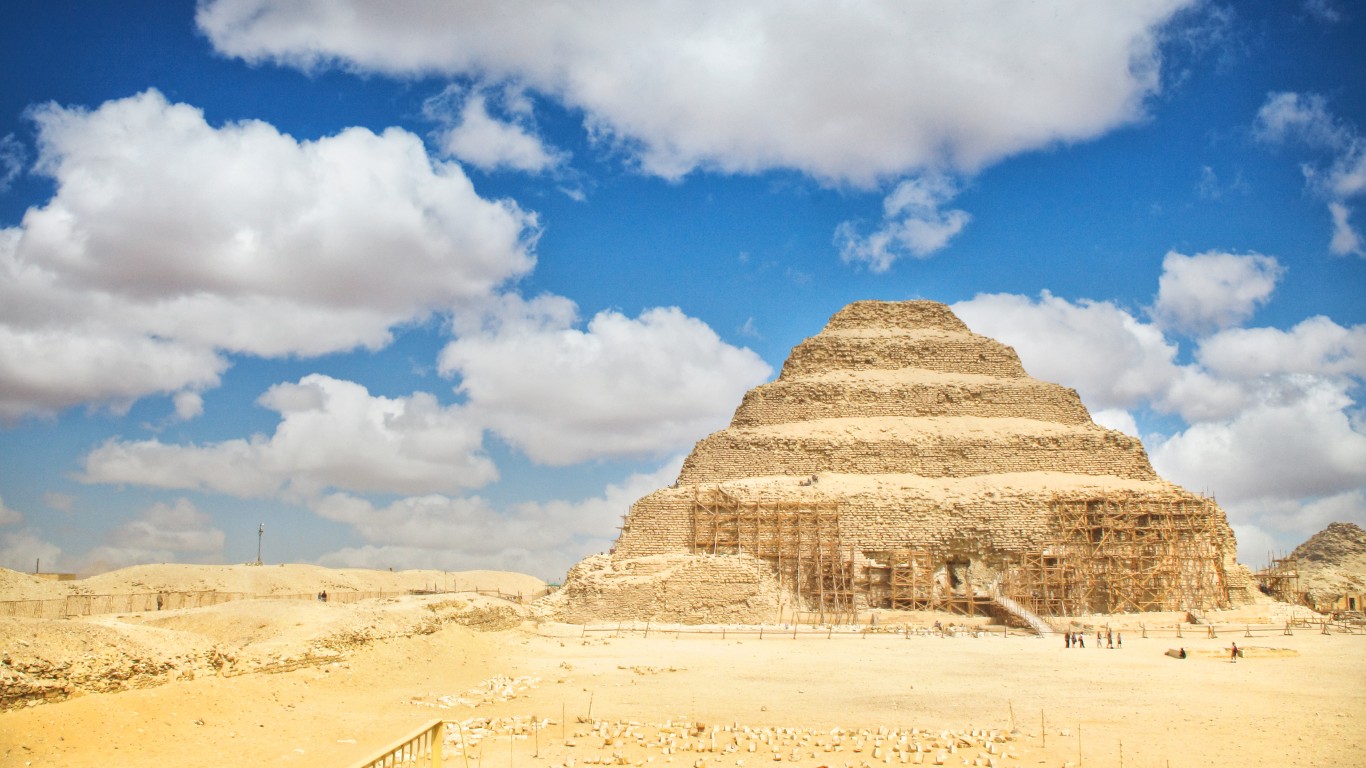
Pyramid of Djoser
> Year built: 2667-2648 B.C.
> Location: Saqqara, Egypt
> Purpose: Tomb
Designed by High Priest Imhotep for the burial of Pharaoh Djoser, this is the earliest of Egypt’s pyramids. The structure, which has six tiers and four sides, was initially 205 feet tall and was covered in polished white limestone. The interior, having been robbed of most contents, including the Pharaoh’s body, contained multiple burial chambers and storerooms where over 40,000 stone vessels have been recovered.

The Great Pyramid of Giza
> Year built: circa 2600 B.C.
> Location: Giza (Greater Cairo), Egypt
> Purpose: Tomb
Built as a tomb for Pharaoh Khufu, this massive pyramid originally stood at 481 feet and was the tallest structure on earth for at least 3,800 years. In its prime, the pyramid was covered in polished white limestone that reflected the sun’s rays and was visible for miles around. Three chambers have been discovered inside the pyramid, although most contents had long been removed by grave robbers.
[in-text-ad-2]
Mohenjo-daro
> Year built: circa 2500 B.C.
> Location: Larkana District, Sindh, Pakistan
> Purpose: Settlement
Translating to “Mound of the Dead Men,” Mohenjo-daro was one of the two major cities of the Indus Valley or Harappan Civilization and shows evidence of advanced urban planning and civil engineering. The city was laid out on a grid plan, with most buildings constructed of fired bricks. It contained public baths, a marketplace, a central well, and two large meeting halls. Houses featured inner courtyards, and some had multiple stories and private bathing rooms.
Get Ready To Retire (Sponsored)
Start by taking a quick retirement quiz from SmartAsset that will match you with up to 3 financial advisors that serve your area and beyond in 5 minutes, or less.
Each advisor has been vetted by SmartAsset and is held to a fiduciary standard to act in your best interests.
Here’s how it works:
1. Answer SmartAsset advisor match quiz
2. Review your pre-screened matches at your leisure. Check out the advisors’ profiles.
3. Speak with advisors at no cost to you. Have an introductory call on the phone or introduction in person and choose whom to work with in the future
Thank you for reading! Have some feedback for us?
Contact the 24/7 Wall St. editorial team.
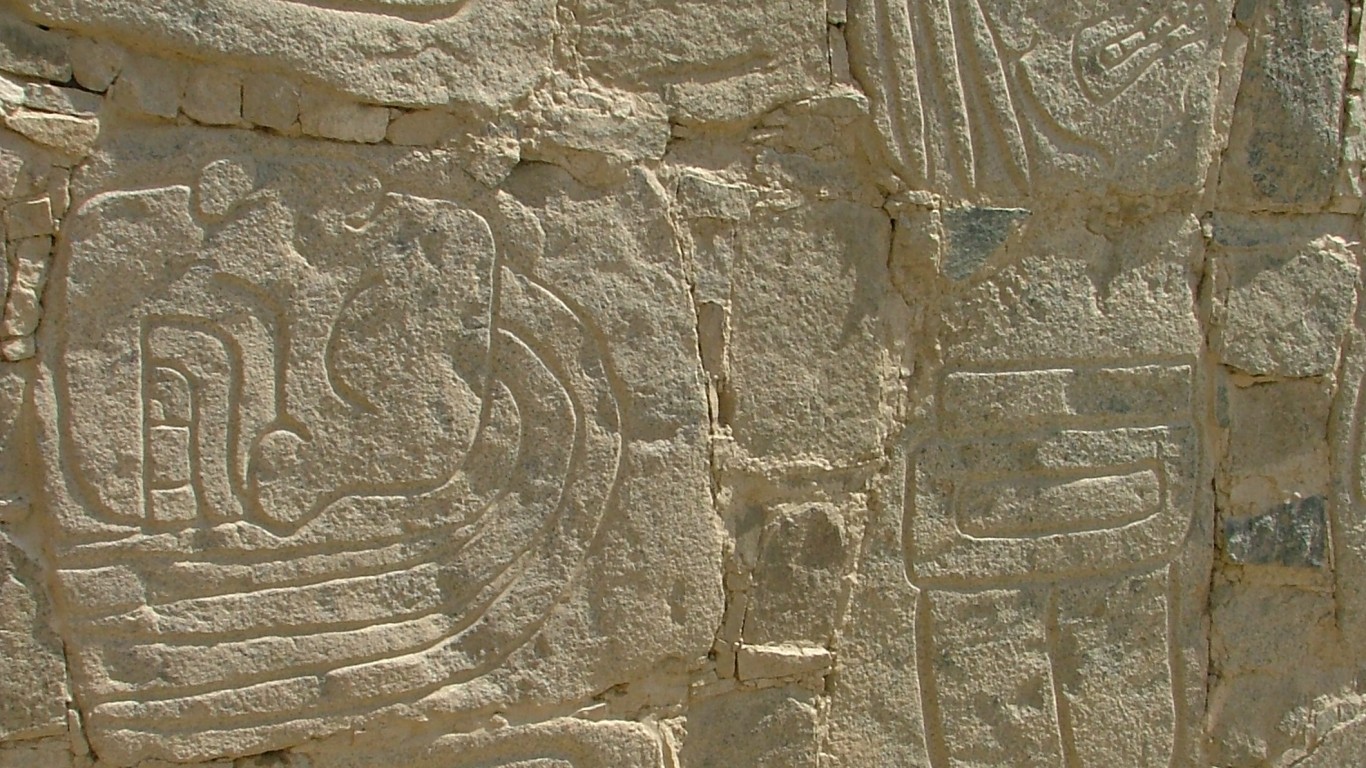
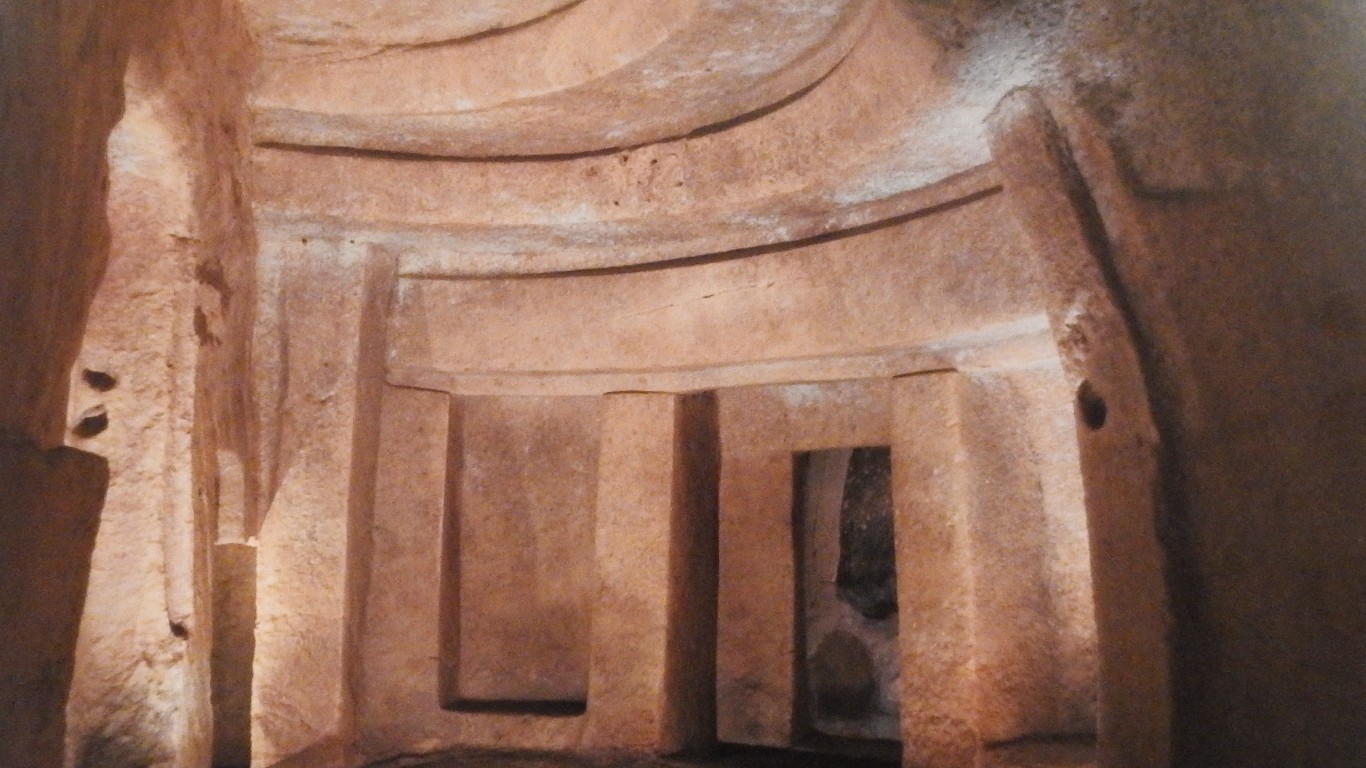
 24/7 Wall St.
24/7 Wall St.
